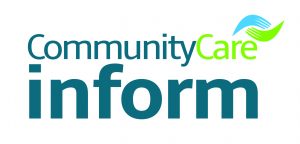
By Lynne Thompson
As a chartered tax adviser I have had a couple of clients with income from fostering. Mainly that was if they also had self employed income, or their partners were working. I had previously worked for the Department for Work and Pensions (DWP), so even though it was not part of my remit or client care package, I always liked to make sure that clients knew about any state benefits or funding they could be entitled to.
I had always assumed that the clients’ social worker would put them on the right track to claiming any state benefits but was most surprised when I found out that this was not necessarily the case.
Foster carers who looked after children with additional needs had been entitled to the extra fostering allowances, and social workers were aware of the criteria of awarding the extra allowances, but were often not aware that these allowances were independent of state benefits. The criteria were different for both, so social workers were often not telling carers of their full entitlements.
It is always more challenging for a social worker to find foster care for a child whose health is not good. This is not only because the child themselves is more challenging, but many foster carers are also deterred because of the extra money it takes to look after these children. Although there is a fostering allowance available to carers of children with disabilities, not all children have a sufficient level of disability to qualify for the extra allowance.
Social workers need to be aware therefore, that there is state help available for children with additional needs. Just because the child’s problems do not qualify for the extra fostering allowance does not mean that this state help is unavailable.
What are foster parents entitled to?
Disability Living Allowance (DLA) is available to parents as well foster carers of children who have problems.
There are two different components to the benefit.
- Care component is available to a child who needs extra care
- Mobility component is available to a child who needs help getting around.
Care component is paid at three rates depending on the level of help required, whilst the mobility component is paid at two rates, again depending on the level of help required. Whilst all children require care, to qualify for the care component of DLA a child must need care in excess the assistance required by a child of similar age, or a different type of assistance. For example you would not expect to help a nine year old child to eat. So if a nine year old child needs help eating, then they need help in excess of that required by a child of a similar age.
As well as the child being entitled to DLA care component, the foster carer can claim carer’s allowance of £66.15 per week. There is an earnings limit of £123 per week. For these purposes a fostering allowance does not count as earnings, so the foster carer can claim both fostering allowance and carer’s allowance.
DLA and the additional fostering allowance do not have the same qualifying criteria. So a foster parent may be entitled to one or both of these extra payments.
If the extra fostering allowance is payable for a child however, it is overwhelmingly likely that there would be an entitlement to both DLA and carer’s allowance.
Example 1
Mark came to Andrea when he was four. His mother was an alcoholic and it is unclear at the moment whether or not he has foetal alcohol syndrome. He has a low attention span, and other behavioural difficulties. He suffers frequent urinary infections so his kidneys have been damaged. He is very small for his age, possibly due to neglect and malnutrition. He is not deemed disabled enough to qualify for the additional fostering allowance.
Andrea needs to watch him more carefully than other children of similar age. He has a tenancy to run off and can strike other children or adults. It is unlikely that he will be toilet trained any time soon. She needs to not only consider his diet carefully and make sure that he not only eats the right things, but also make sure that he does in fact eat.
Andrea spends a lot of time calming Mark and trying to stimulate him so that he can attend mainstream school.
She claims the care component of DLA at the middle rate of £58.70 and carer’s allowance of £66.15. She uses this to provide extra activities for Mark.
If a child is unable or virtually unable to walk, or has a severe mental impairment that qualifies for the higher rate of the care component, they will also qualify for the mobility component of DLA.
A child qualifies if the exertion required to walk would constitute a danger to their health, or if their ability to walk is limited by distance, speed and length of time.
Example 2
Rebecca fosters Katie, aged 12, who has cerebral palsy. She qualifies for the extra fostering allowance. She cannot feed herself, bathe or dress herself. She needs to be checked several times during the night in case she has got herself into a strange position. Katie wakes up several times during the night.
Rebecca, in addition to the extra fostering allowance claims:
- Carer’s allowance of £66.15
- DLA care component £87.65
- DLA mobility component £61.20
It is normally the main carers of the child who would make the claim. However, if the child returns home regularly a suitable calculation about apportioning the DLA would be made.
There are no conditions from the DWP about how the money should be spent, and it is not intended that the benefit should be saved for the child and given to them when they are older. In fact this could prevent them receiving means tested benefits in the future.
Whilst social workers need not have a detailed knowledge of DLA and its qualifying conditions it would be beneficial for them to have a broad understanding that this is available, and it is available whether or not the placement qualifies for the increased fostering allowance.
Lynne Thompson provides private client support to professional firms such as solicitors and accountants. She advises on private client tax matters, state benefits and care home funding.
 More on foster carers and other families’ entitlements to benefits
More on foster carers and other families’ entitlements to benefitsCommunity Care Inform Children subscribers can access a range of guides to help you signpost and ensure families have clear information about benefits they are entitled to. These include:
- Tax and benefits when you foster or adopt a child
- The payment of family and friends carers as foster carers
- A-Z of welfare benefits (regularly updated; provides bite-sized information on eligibility and how to claim all major social security benefits available in the UK, and their current financial value)
- Benefits for young people
- Direct payments under section 17: quick guide to the law
Find information and answers to FAQs about accessing CC Inform here.


 A trauma-informed approach to social work: practice tips
A trauma-informed approach to social work: practice tips  Problem gambling: how to recognise the warning signs
Problem gambling: how to recognise the warning signs 




 Find out how to develop your emotional resilience with our free downloadable guide
Find out how to develop your emotional resilience with our free downloadable guide  Develop your social work career with Community Care’s Careers and Training Guide
Develop your social work career with Community Care’s Careers and Training Guide  ‘Dear Sajid Javid: please end the inappropriate detention of autistic people and those with learning disabilities’
‘Dear Sajid Javid: please end the inappropriate detention of autistic people and those with learning disabilities’ Ofsted calls for power to scrutinise children’s home groups
Ofsted calls for power to scrutinise children’s home groups Seven in eight commissioners paying below ‘minimum rate for home care’
Seven in eight commissioners paying below ‘minimum rate for home care’
 Facebook
Facebook X
X LinkedIn
LinkedIn Instagram
Instagram
This information is very helpful.
Um, hello, social workers do not care what foster carers are entitled to except at the luring stage. They will actively try to cut costs ie additional costs and payments you’re entitled to too, beware.
Um. Hello. You are missing the whole point of the article. Dla and ca do not come from social services funds. Its dwp.
If more social workers were aware of Foster carer entitlements under these circumstances they would have an easier time placing disabled children.
It is the child who is entitled to DLA not the Foster Carer, unless the Foster Carer has a chronic health condition or a disability that might meet the criteria for a claim for PIP.
I feel that this article is a little confusing unless you are aware of the complexities of the benefits system
The article does not say that the foster carer is entitled to DLA. The article explains that it is the child’s needs that determines the entitlement. However, it is up to the foster carer to claim it on behalf of the child